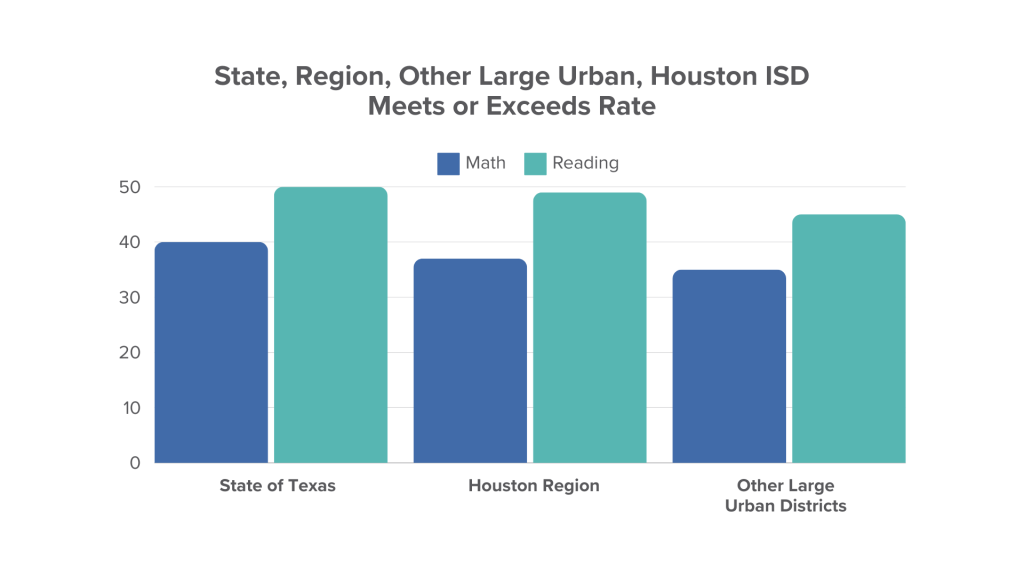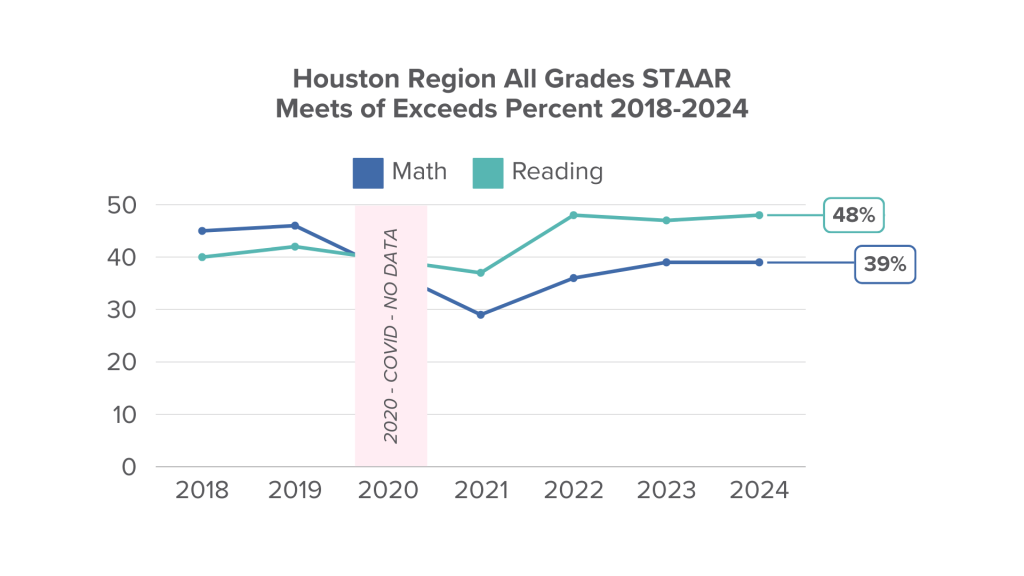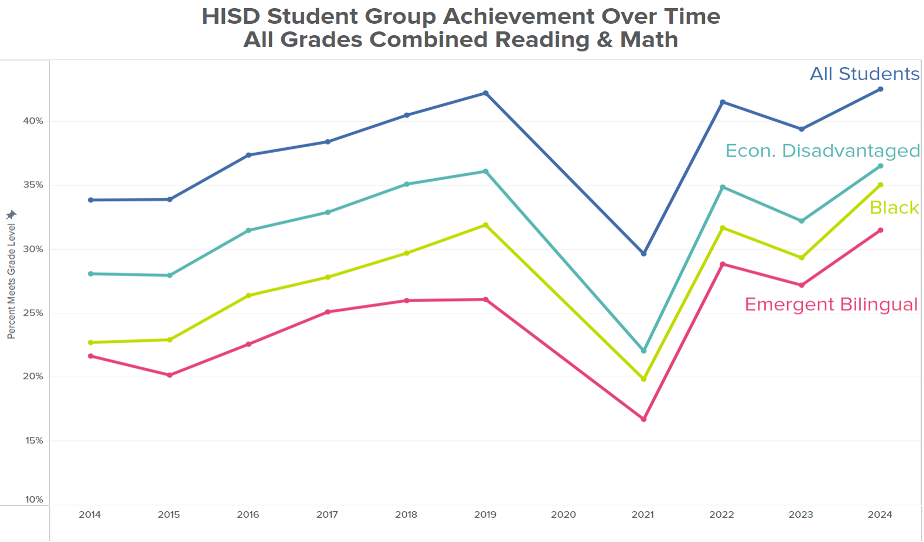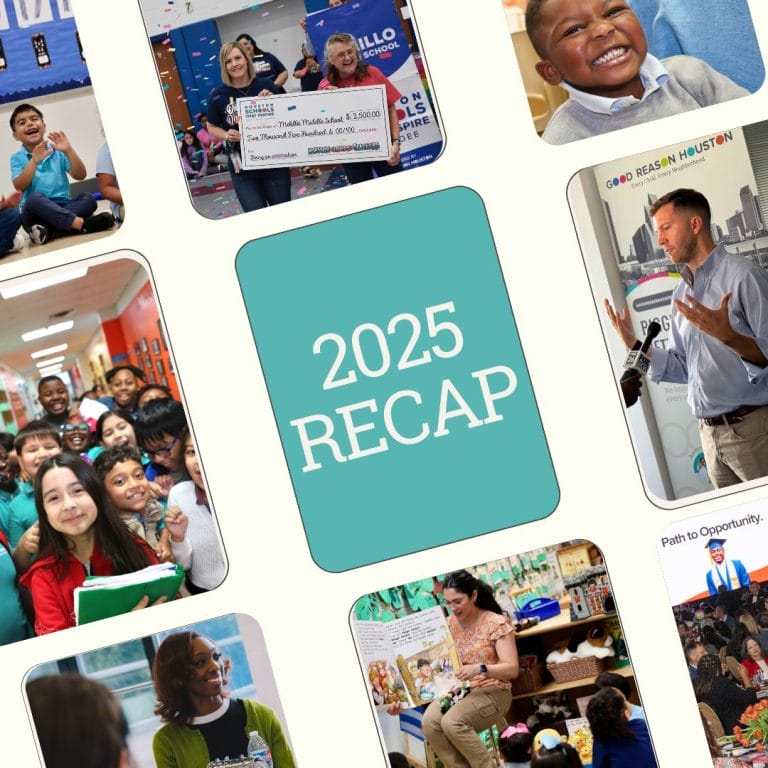Note From The CEO
Dear Partner,
Each year, we have the chance to see how effectively schools and districts are supporting students academically. Recently, we’ve had an opportunity to do just that. Across Houston, district and school leaders have been analyzing their State of Texas Assessments of Academic Readiness (STAAR) results. This offers a lens for all of the adults that support students – parents, superintendents, principals, community members, and business leaders – to gain critical insights into whether the children across our community are being prepared for the next grade, graduation, college acceptance, or a career of their choosing. You see, this data isn’t telling us how well a school prepared children for a test today; this data tells us how well we’re preparing students for opportunity and choice-filled lives tomorrow.
As I look at the results, I am cautiously optimistic. While there is cause for celebration, there is also much work to be done. Reading scores for all tested grades have increased by 2 percentage points since last year, which is a positive sign of progress. However, math scores have remained flat, reminding us that there are still significant challenges to address. Although we are still significantly below pre-pandemic levels in math, with nearly 194,000 students not yet meeting grade level standards, this presents an opportunity for us to redouble our efforts and support these students more effectively.
We are onto something in Houston. While our region is slightly underperforming state averages, we are outperforming other large urban districts across the state in absolute proficiency levels. Even more, when we look at 3-8 specifically, while we remained flat in math, the state and other large urban districts in Texas decreased. In reading, our growth exceeded the state and other large urban districts.
This means that we have bright spots in our backyard:
- Galena Park ISD, Houston ISD, and YES Prep all saw gains in both 3-8 math and reading
- Aldine ISD, Houston ISD, Sheldon ISD, and YES Prep all saw stronger gains in English EOC than some of their peer districts
- Houston ISD stands out with their gains in Algebra EOC this year
And this does not even capture other pockets of progress – gains we’re seeing on individual campuses across the region.
My ask for each of you is to hold two things to be true. First, we have to double down on our efforts and expectations. Our commitment to you is to continue communicating progress and elevating opportunities we have to move farther faster. Second, we must celebrate progress as we work towards a future where Houston is the top education city of the nation. To do this, let’s commit to learning more about what the districts and schools in our region are doing to challenge the norm, drastically expanding the options available to students in every neighborhood in Houston.
Onward,

CLOSER LOOK
The Houston region is slightly underperforming the state and outperforming other large Texas urban districts in both reading and math when we combine third through twelfth graders. Looking at growth since last year, math performance in our region remained unchanged from 2023 to 2024. Reading proficiency did increase overall, with particularly notable gains among Black and emergent bilingual students.
Still, just over 1 in 3 students are meeting grade level standards in math and less than 1 in 2 students can read on grade level in our region, with persistent challenges facing students from historically marginalized backgrounds in particular.

Across the region, math proficiency rates remain a critical challenge, with 6 out of 10 students across all grades not meeting grade-level standards. That means 194,000 students in the Houston region are not on grade level in math today. Math performance in Houston and across Texas remains well below pre-pandemic levels, highlighting the important work ahead to set our students up for long-term success.

BRIGHT SPOT: HOUSTON ISD
When combined, Houston ISD reading and math proficiency for all students is at its highest levels since at least 2014. Black, Economically Disadvantaged, and Emergent Bilingual student populations put up the highest rates of proficiency recorded in at least a decade.







